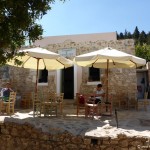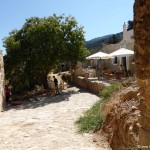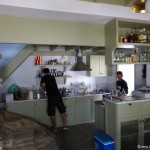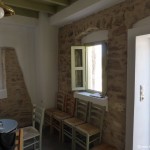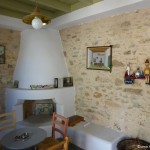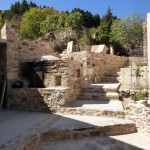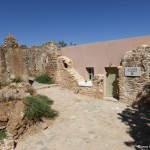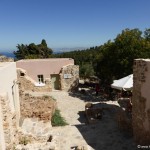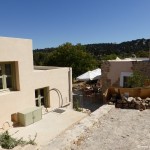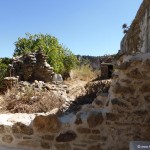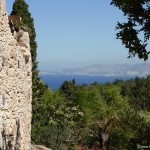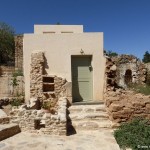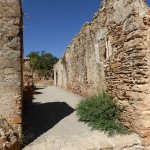Haihoutes
From mid-2013 Alex runs the traditional, atmospheric cafe Haihoutes (Gègoutes), the ancient name for the abandoned village of Agios Dimitrios.
They serve a variety of drinks and have a small card for some snacks (eg omelette). If you want to have a meat dish you have to order that one day in advance. It is then cooked in a traditional stone oven next to the cafe.
What makes Haihoutes really special is the atmosphere. The village consists almost exclusively ruins. The old walls of the cafe and outbuildings are preserved as most as possible and the rest is restored in straight lines.
From the terrace you have a nice view and all around are the remains of several buildings.
Next to the cafe is a museum where traditional objects are shown. Unfortunately this was not ready in September 2013.
The story of Haihoutes
On the way to Zia from Asklepion, we come across Agios Dimitrios or Haihoutes, the first and smallest community of the village Asfendiou, perhaps of kos island itself. Perched high on the slope of mount Dikeos, it is approximately 200m from central road and 2km before Zia. The name Haihoutes may date to the Haihoudes family, which is likely to have first inhabited the area, or it may come from “Haihout”, which means Armenian because they settled there during the Turkish occupation.
The community came into existence after 1821 in the area of ancient Pixa. There were 35 houses around a mountain spring. It is certain that its inhabitants were landless in the years of the occupation and cultivated the properties of the city folk. The surrounding area was rich in vineyards and olive groves, the oldest olive press of the region being located nearby.
During the Second World War, many residents from Kos city fled to Haihoutes for safety. The first school on the island was organised in the church of Ag. Dimitrios and by 1959 there were 40 students attending.
But during the 50s residents started moving to the more convenient plains below, or to the city of Kos. In the 60s half the residents of the 180 strong pre-war community remained and by 1980 it was almost completely abandoned.
In 2007 the last resident left.
In the last few years great efforts have been made to rescue the community. The traditional coffeehouse “Haihoutes” was created in which is featured a small museum exhibit of traditional objects. It aspires to become the core of a project aimed to research, document, rescue and highlight the area traditions. It hopes to succeed as an alternative proposal for development, one which relies on conveying the wealth and beauty of the cultural history that is found on the area’s public baths, olive presses, quarries, water mills, churches and so on.

